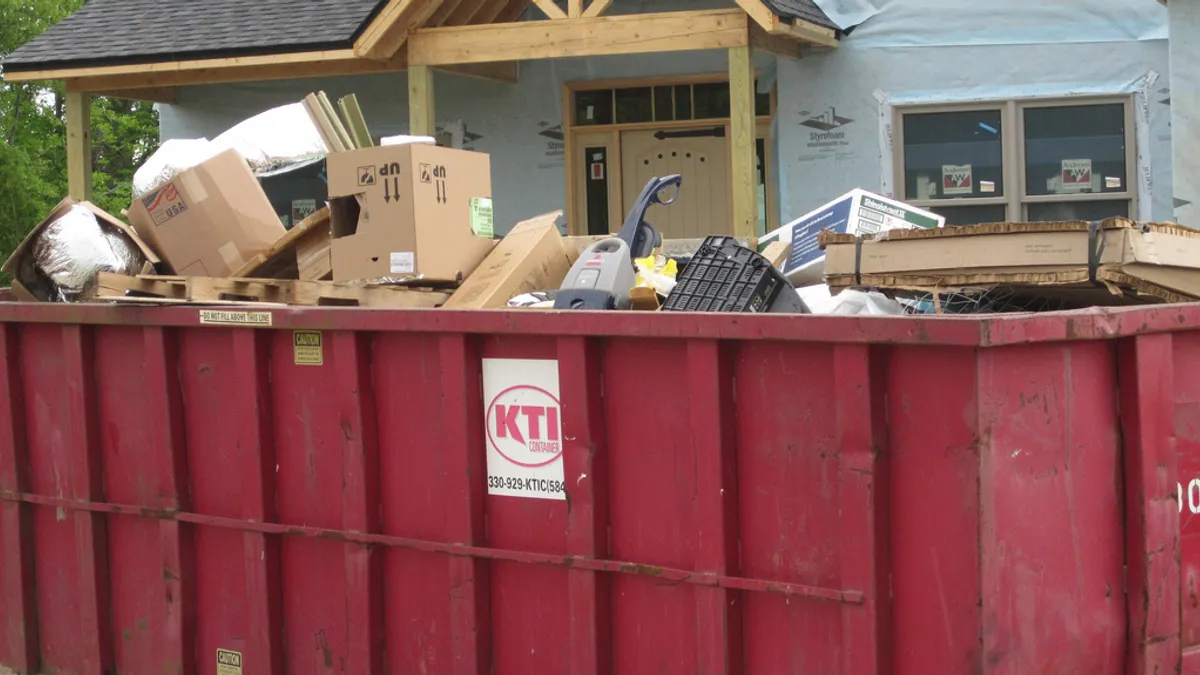Dive Brief:
- The amount of C&D waste produced from members of the Northeast Waste Management Officials' Association (NEWMOA), which are Connecticut, Maine, Massachusetts, New Hampshire, New Jersey, New York, Rhode Island and Vermont, remained about the same between 2006 (8.47 million tons) and 2013 (8.33 million tons), according to a webinar hosted by the Northeast Recycling Council (NERC), where presenters detailed the latest C&D waste data.
- While all the states recorded export of C&D waste to other NEWMOA or non-NEWMOA states, region-wide, 56% of the material remained within its state of origin.
- Generation numbers remained relatively stable, but reuse and recovery numbers dropped. In 2013, NEWMOA states disposed about 16% less C&D waste than in 2006. But they also sent 329,000 fewer tons to be reused at landfills (such as for grading or as an alternative daily cover) and recovered about 800,000 tons fewer than in 2006.
Where processors sent material in each state in 2013
| CT | ME | MA | NH | NY | RI | VT | |
| Disposal | 925,122 | 40,711 | 110,865 | 60,873 | 2,040,787 | 6,762 | 0 |
| Landfill uses | 0 | 136,994 | 211,398 | 154,243 | 477,217 | 246,564 | 4,198 |
| Recovery | 58,078 | 54,134 | 262,187 | 90,711 | 637,000 | 44,673 | 0 |
Dive Insight:
Notably, New York did the most recovery and re-use in 2013, based on total tonnage. About 1.1 million tons of C&D were recovered or sent for use at landfill, compared to about 2 million sent for disposal. Vermont processors reportedly recovered or disposed no C&D material, sending it all to be used at landfills for other purposes.
It is worth noting that these numbers cannot be guaranteed to be entirely accurate. Connecticut, for example, does not receive data on what exported waste is used as a landfill cover rather than disposed, and NEWMOA calls some data collected by Rhode Island "questionable," saying some numbers, including the amount of material received for recovery and disposal could be under-reported.
However, NEWMOA did follow its EPA-approved Quality Management Plan for its data analysis. One reason for lacking or incomplete data in recent years has been cuts made to state-level environmental agencies that would be responsible for gathering said data.
Useful or interesting as the data may be, NEWMOA and NERC both said it may be awhile before similar reports are published.
"I fear it will be several years," NERC Executive Director Lynn Rubinstein said in an email. "As you can imagine, it’s a tremendous amount of work and this study was just published."
NEWMOA Executive Director Terri Goldberg said in an email a similar report may be published in another two years, adding that there is no regular schedule.
C&D waste creates significant tonnage and takes up substantial space at a time when states in the Northeast are already beginning to export waste because of tightening capacity. As that trend continues, it makes sense to see diversion and recovery numbers rising. In addition to using material as ADC for landfills, there is also growing interest in the potential for zero waste design, more careful diversion from job sites and concepts that can create new end markets for the material being captured.














